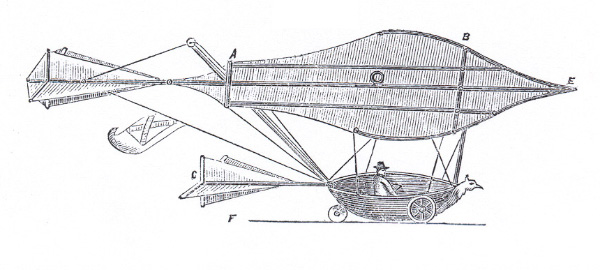
Yorkshire Baron (1773-1857) George Cayley was a notable engineer and thought to be the first person to understand the principles and forces of flight. By 1796, he had built his first aeronautic device, a model helicopter and by 1799 Cayley had developed the concept of the modern airplane as a fixed-wing flying machine with separate systems for lift, propulsion and control (http://www.flyingmachines.org/cayl.html).
Preceding the Wright Brother’s by one hundred years, Cayley devoted much of his work through the 1800s on aeronautics. By 1849, he and his team flew a full sized glider crewed by a young boy (seen in sketch above) (The Man who Discovered Flight: George Cayley and the First Airplane, 2007, Stewart).
Because Cayley’s work was so revolutionary and before its time, his name and ideas remained relatively unknown after his death. According to Anderson in A History of Aerodynamics: And Its Impact on Flying Machines, Cayley’s work was “carried out in an intellectual atmosphere of dawning enlightenment in regard to aerodynamics, but that atmosphere was still too rarefied to have provided Cayley with many useful, practical tools.” The absence of those tools made testing of his principles difficult to accomplish, although he conducted extensive experiments which constitute much of the original research on airplane aerodynamics (Anderson, 1998). He also lent himself to inventing designs for steerable airships, likely encouraged by the popularity of ballooning.
Cayley also is credited with inventing in 1825 a tracted land vehicle, the grandfather of 20th century military tanks and the 1847 invention of an artificial hand that would replace the simple hook used for previous centuries. He also contributed to a host of other fields with inventions, experiments, and ideas that have had an impact on technologies still in use today…including the seat belt.
Cayley seems like a well respected and liked person who was educated primarily by two tutors, invested much of his own money in his research, and often contributed to social causes (Anderson, 1998).
Here is a link to build your own Cayley glider: http://makezine.com/projects/make-37/cayley-glider/









